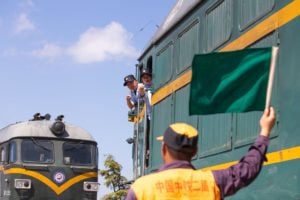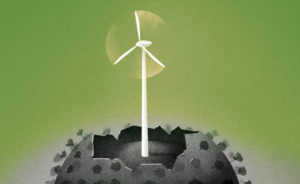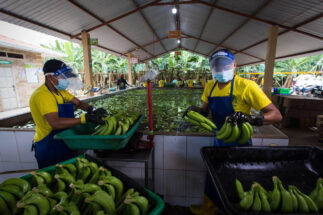In September 2021, a US diplomatic delegation headed by Deputy National Security Advisor Daleep Singh visited Colombia, Panama and Ecuador as part of a “global listening tour” aimed at gaining a better understanding of how the Build Back Better World (B3W) initiative can support local infrastructure needs.
Launched last year at the UK-hosted G7 summit in June, the B3W declares itself to be “a values-driven, high-standard, and transparent infrastructure partnership”, with focus on investments in renewable energy, digital technology, healthcare and female-led business.
In Latin America – one of the regions worst affected by the Covid-19 pandemic, both in health and economic terms – the initiative could provide a welcome boost. But with firmer financial details on the programme yet to emerge, and a likelihood of stricter conditions on its loans and investment, it is as yet difficult to see how B3W can provide its desired “strategic competition with China”.
Chinese sovereign loans to Latin America and the Caribbean have totalled US$137 billion since 2005, according to The Dialogue and Boston University’s China-Latin America Finance Database, and Chinese banks have backed scores of infrastructure projects in the region through commercial loans and joint funds.
“It’s evident that B3W is an initiative to counter the influence China has built as a result of the Belt and Road Initiative [BRI],” says Katherin Galindo Ortiz, an analyst at Colombia Risk Analysis, a Bogotá-based consultancy. “But B3W remains in debate, we don’t know if and when it will become a reality.”
Old wine, new bottle?
No funding has yet been announced for B3W, but the intention is to use the US’s Development Finance Corporation (DFC), USAID and EXIM Bank to spur much wider private investment from G7 countries. In that respect, it bears a strong similarity to the América Crece initiative launched in December 2019 – and now presumably defunct – albeit with a greater focus on sustainability and social equity issues.
“América Crece is not a thing anymore,” says Eric Farnsworth, vice-president of the Council of the Americas, a US-based business association. “There was no time for it to be implemented, and the Biden administration was never going to take on anything developed under the Trump government. But the B3W tries to use the same tools, such as the DFC, to mobilise further private investment.”
The September diplomatic visits did yield some modest agreements. In Colombia, the DFC announced a US$26 million assistance package aimed at agricultural workers and Venezuelan migrants, and discussed enhancing local vaccine capacity. In December, Canada’s Providence Therapeutics signed a memorandum of understanding with Colombian firm VaxThera to develop vaccine production facilities in Medellín, with the first doses forecast for June 2022. In Ecuador, the DFC agreed a US$150 million loan to small businesses affected by the Covid-19 pandemic.
However, the B3W does not yet appear to propose solutions to at least two long-standing problems: the unwillingness of some Latin American governments to accept loan and investment conditions and the inability of private capital to compete on price with state-backed Chinese firms. For risk-averse investors from the US and other G7 nations, then, “the question is what changes B3W can bring to improve the cost-benefit analysis,” says Galindo Ortiz.
Transparency in focus
The B3W places an emphasis on transparent, sustainable and accountable infrastructure development based on the Blue Dot Network certification programme, launched by the US, Japan and Australia and supported by the Organisation of Economic Cooperation and Development (OECD) in November 2019. As such, the B3W appears to be inherently restricted in terms of the countries it can operate in, given that some governments such as those of Venezuela and Nicaragua – both signatories to the BRI – are unlikely to accept such terms.
Of the three countries Singh’s delegation visited in September, two – Colombia and Panama – could be considered historical US allies, but both have seen major Chinese investments in recent years. In Colombia, Chinese firms have acquired the country’s largest gold mine and won tenders for the construction of the Bogotá metro system.
“At the moment, Colombia does not need to decide if it is more aligned to the US or China,” says Galindo Ortiz. “The US will continue to be the most important trading partner, but it’s also evident that Colombia needs to diversify its partners to rebuild the economy, and China provides the capital flows needed to do so.”
Will funding from the DFC really encourage private investors to overcome their misgivings about political risk in the region? The pro-market presidency of Guillermo Lasso in Ecuador makes the country a contender for foreign investment today, but a return to government in future elections of the Alianza PAIS party (now rebranded as MOVER) – which held power from 2007 to 2021 and welcomed Chinese infrastructure finance – would likely mean a change in diplomatic strategy. In January, the current frontrunner for the 2022 Brazilian election, Luiz Inácio Lula de Silva, repeated his long-held criticisms of US influence in the region, following Biden’s description of Latin America as the US’s “front yard”.
Furthermore, investments in human infrastructure, such as education and the environment, might enhance US soft power but are unlikely to attract private funds to larger projects.
“Private sector companies won’t pay over the market price for strategic assets, but China will pay whatever it takes,” says Farnsworth. “The US can try to compete on values – transparency, labour rights, the environment – but it’s not an agenda that’s easy to sell.”
Compete and complement
Ultimately, for some commentators, issues of strategic competition may be of secondary importance for nations facing genuine, and giant, infrastructure gaps. With an estimated US$2.2 trillion in infrastructure spending needed by 2030 for Latin American and Caribbean countries to meet the UN’s Sustainable Development Goals, B3W may provide a much-needed complement to the BRI. “In order to build back a better world following the Covid-19 pandemic, the B3W and BRI must work together,” US-based academic Keren Zhu wrote in The Diplomat.
Within China, officials appear to have welcomed B3W. “China believes there is a broad space for cooperation in the field of global infrastructure, rather than various initiatives competing with each other or replacing each other,” said Wang Wenbin, a spokesperson for China’s Ministry of Foreign Affairs, at a press conference in November. Its vice foreign minister, Le Yucheng, also tentatively welcomed the B3W’s announcement, saying that the nation “would not exclude good cooperation plans from other countries”.
The US needs to show partnership on key issues in the region and redevelop the trade agenda, otherwise competing with the BRI is fantasyEric Farnsworth, vice-president of the Council of the Americas
Last week, in a video message at an event commemorating the normalising of relations between the US and China, Foreign Minister Wang Yi expressed China’s willingness to coordinate with B3W: “China is open to the United States participating in the Belt and Road Initiative. We are also willing to consider coordinating with the US Build Back Better World initiative to provide the world with more high-quality public goods.”
Such a message suggests that the possibility for cooperation between BRI and B3W initiatives does exist, and a healthy competition with well-managed projects could yet benefit Latin American nations. To be effective, the B3W would first need to drastically increase its resources and diplomatic heft at a time when its international aid budgets are diminishing, and the US is without an ambassador in 11 countries in the region.
“We need to put more money forward, the DFC needs to be staffed up and make strategic investments and we need to replenish other institutions such as the Inter-American Development Bank,” says Farnsworth. “We need to show partnership in the key issues in the region, including debt relief, healthcare and education, and we need to redevelop the trade agenda with countries such as Brazil and Ecuador, otherwise all this talk of competing with the BRI is just fantasy.”
This article was first published on Diálogo Chino.








